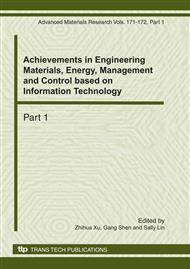p.337
p.342
p.346
p.350
p.354
p.358
p.364
p.368
p.374
The Finite Element Simulation and Analysis of Thermal Stress Field of In-Service Tubular Electro-Thermal Component
Abstract:
The tubular electro-thermal component will produce thermal stress when water in the tube is heated by electricity, which is one of important factors to cause the fracture. In this paper, the finite element simulation and theoretical analyzing methods are used to analyze the thermal stress field of the electro-thermal component tube with different substrates, i.e., quartz glass and borosilicate glass. The result shows that under the same condition, the highest temperature of electro-thermal component using borosilicate glass substrate is higher than that using quartz substrate. When in service, the inner surface of electro-thermal component endures tensile stress and the outer surface endures compressive stress. The inner surface produces greater thermal stress and therefore fracture is more likely to emerge on the inner surface. Therefore, in order to prevent forming of the fracture and reduce the thermal stress, compared with borosilicate glass, priority should be given to quartz glass as the material for manufacturing electro-thermal component.
Info:
Periodical:
Pages:
354-357
Citation:
Online since:
December 2010
Authors:
Price:
Сopyright:
© 2011 Trans Tech Publications Ltd. All Rights Reserved
Share:
Citation:


